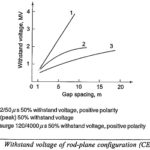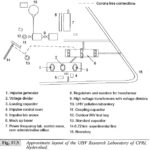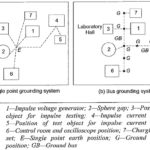High Voltage Laboratory Design Articles:
High Voltage Laboratory Equipments: A High Voltage Laboratory Equipments is expected to carry out withstand and/or flashover tests at high voltages on the following transmission system equipment: Transformers Lightning arresters Isolators and circuit breakers Different types of insulators Cables Capacitors Line hardware and accessories Other equipment like reactors, etc. Different … (Read More)
Classification of High Voltage Laboratories: Classification of High Voltage Laboratories depending on the purpose for which they are intended and the resources (finances) available, can be classified into four types. Small laboratories Medium size laboratories Large general purpose laboratories UHV laboratories Some salient features of these … (Read More)
High Voltage Laboratory Rating: The High Voltage Laboratory Rating and size of test equipment chosen in the h.v. laboratories depends on the test facilities to be provided. Normally, the design of the laboratories for 230 kV system voltage and below does … (Read More)
Operation of UHV Laboratory: Operation of UHV Laboratory are designed as indoor laboratories or outdoor laboratories depending on the specific requirements. An indoor laboratory is preferred when most of the equipment testing and associated research work is carried out indoors, whereas … (Read More)
Grounding of Impulse Testing Laboratories: An earth or ground system means an established stable .reference potential normally taken to be zero. There are three types of Grounding of Impulse Testing Laboratories are: the ideal ground, single point ground (Fig. 11.4a), and the … (Read More)


